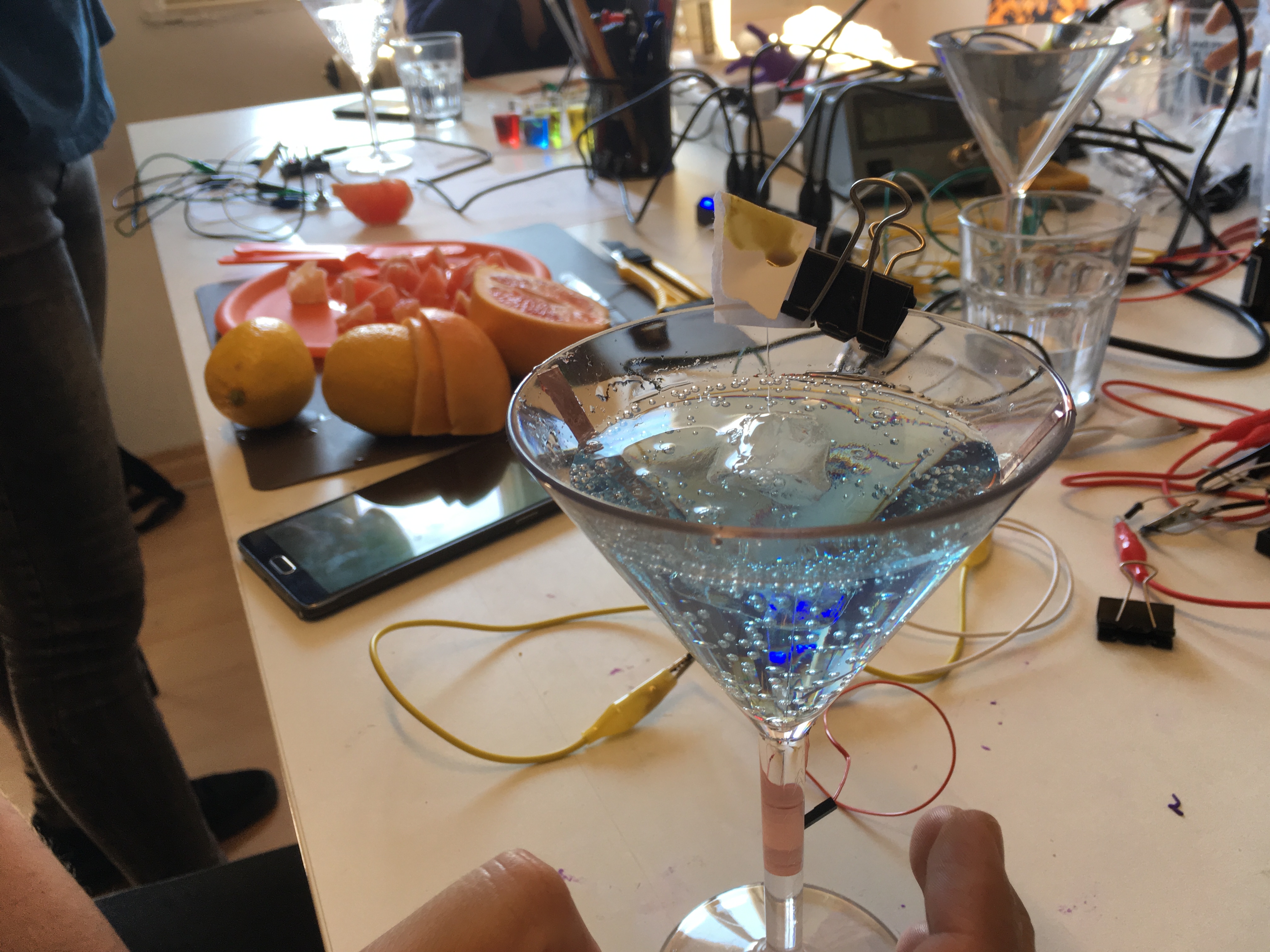Materials: Arduino, electrical cables prototyping board cocktail glass [or other receptacles] 4mm copper tape, Water. Instruction: The diagrams give an outline of the electronic circuit required to create an electronic taste perception experiment in conjunction with the Arduino code. The circuit is created through the body via a fingertip and another electrode which is placed inside the glass, the circuit completed when the drink enters the mouth. The potentiometer adjusts the frequency of the signal which in theory can then simulate different kinds of taste. Notes: Experiment with different liquids and food types to see how the electrical signal augments different flavours. Note that foodstuffs with high moisture content are more effective such as a cucumber. The circuit could be easily modified to include
Tag: taste
Electronic Taste Perception Workshop – Radiona
[Here is some documentation from one of the activities for the 're-mapping the senses workshop earlier this year...] Our sense of taste is directly affected by the colour and smell of the food. Experiments prove that the colour of a drink affects our perception of its sweetness for example. Altering the sound of the food, say adjusting the high-end frequencies while eating crisps can also affect our perception of the crunchiness of those crisps [see the paper here. Playing with these assumptions and expectations can create heightened food experiences. There have been a number of studies that suggest it is possible to simulate Sweetness, bitterness, sourness. Specifically, we test these settings as claimed by the Vocktail project [see below] to simulate the following sensations... Sour: magnitude of current: 180
